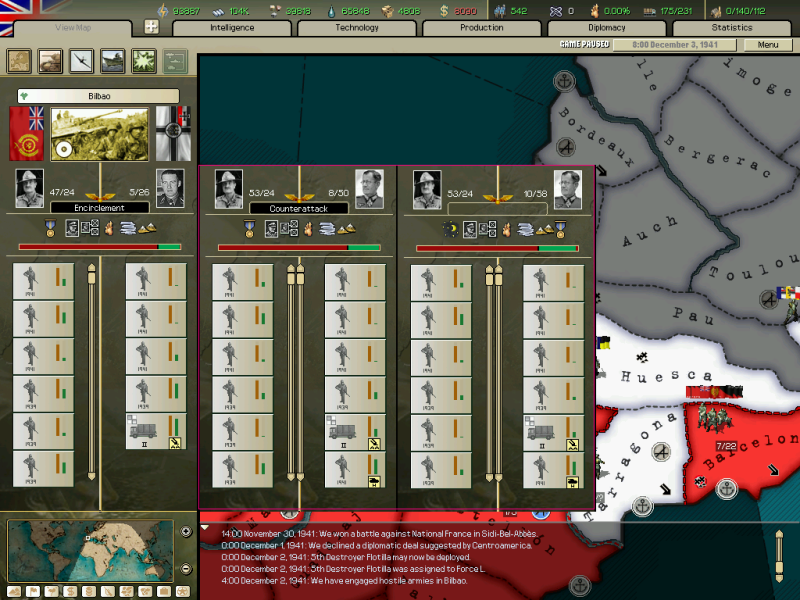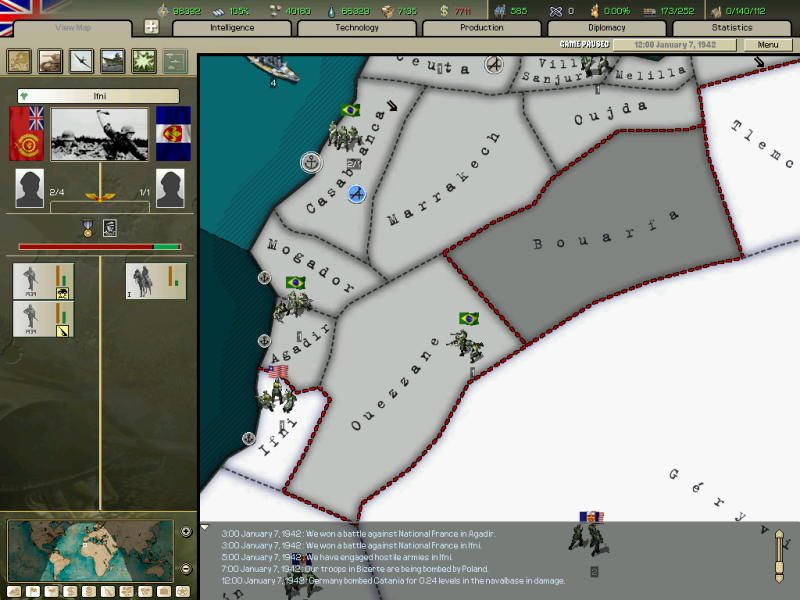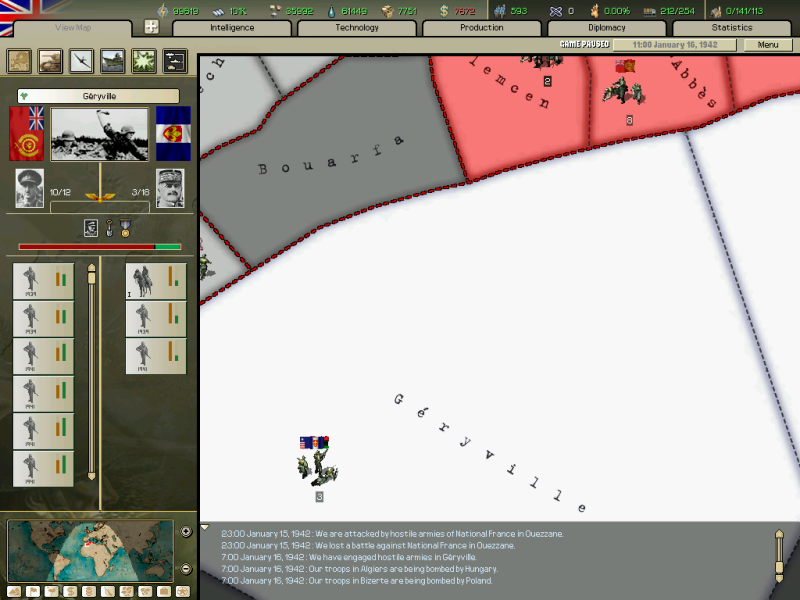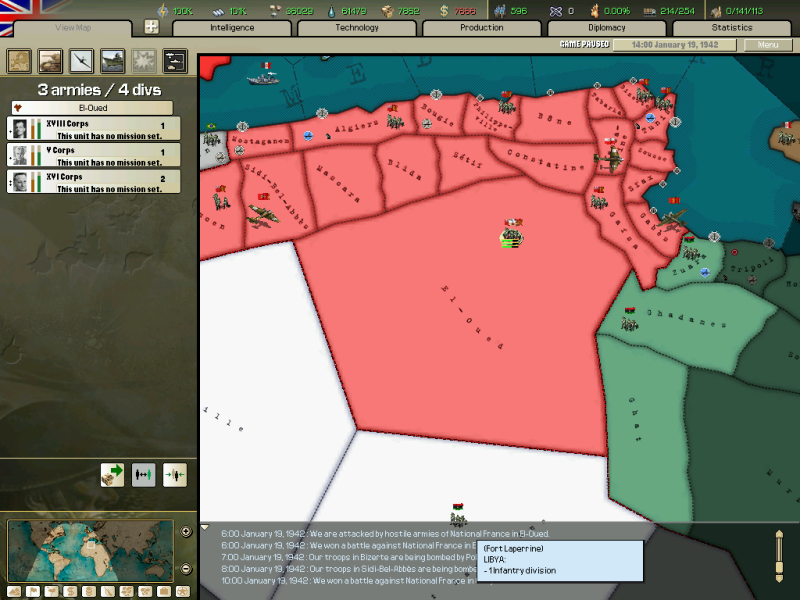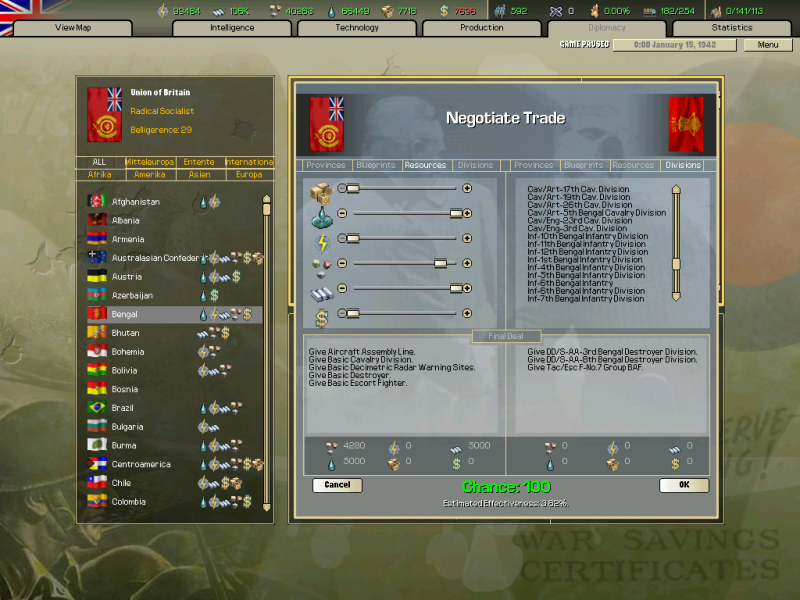Very well, it shall continue.
Morlak: The latest intelligence reports state that Germany has 199 (!) infantry divisions and 5 armored divisions, while National France has 37 infantry divisions. Then of course there are the Mitteleuropean client states and Austria who are also fighting against me. However, a part of this huge army is deployed on the Ukrainian front, while another part of it is probably garrisoning Russian territories.
---
As the African situation deteriorated with the landing of Ottoman troops near Tunis...
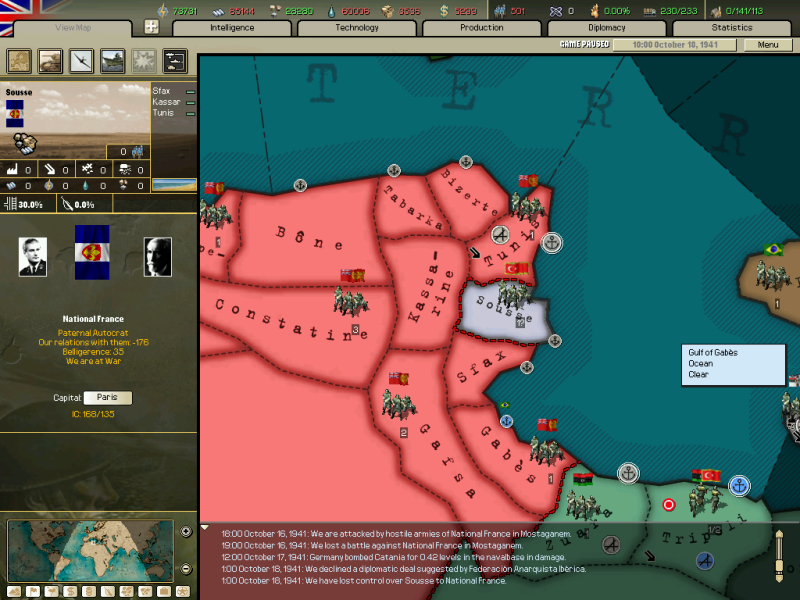
The situation in Southern Spain improved, as Syndicalist troops secured Seville and then attacked Málaga and Huelva to further fragment and destroy the Carlists.


Meanwhile, in the north, Mitteleuropa sought to advance deeper into Spain, attacking the weakly defended Castellón.
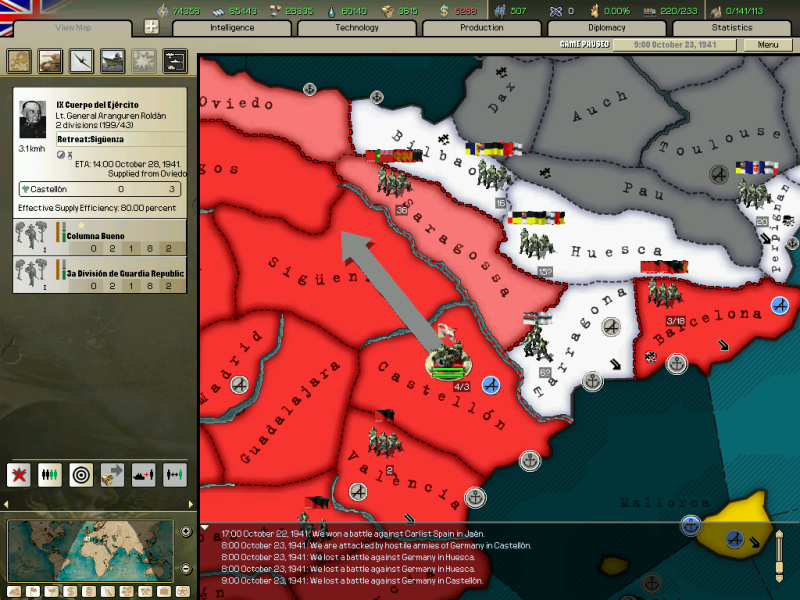
Obviously, the Syndicalist high command tried to isolate these troops, attacking at Huesca, but the Germans were prepared, and British and Spanish numerical superiority wasn't sufficient to oust the entrenched German and French divisions.
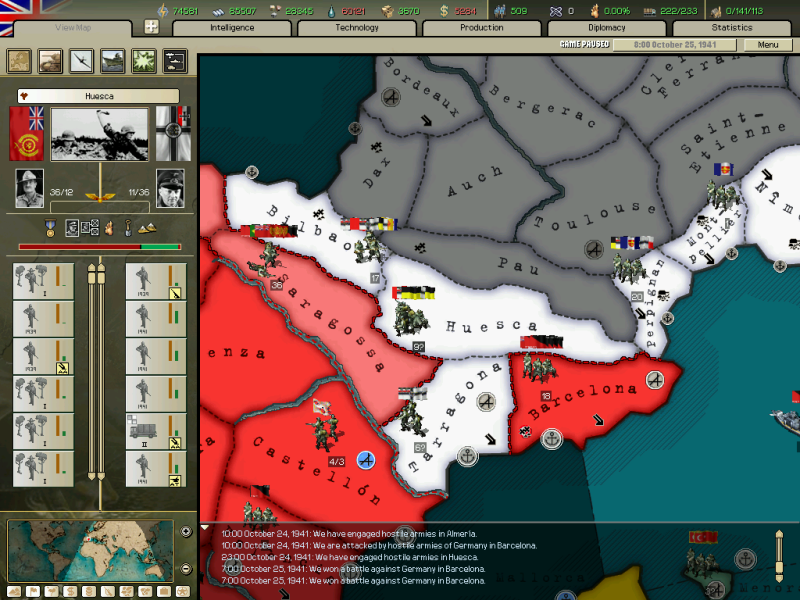
In the south, the Syndicalists were unstoppable. First, the isolated troops in Almería were crushed by the British divisions flooding into the region. After that, the Union of Britain and the CNT-FAI surrounded Gibraltar and prepared to launch a final assault against the Rock.

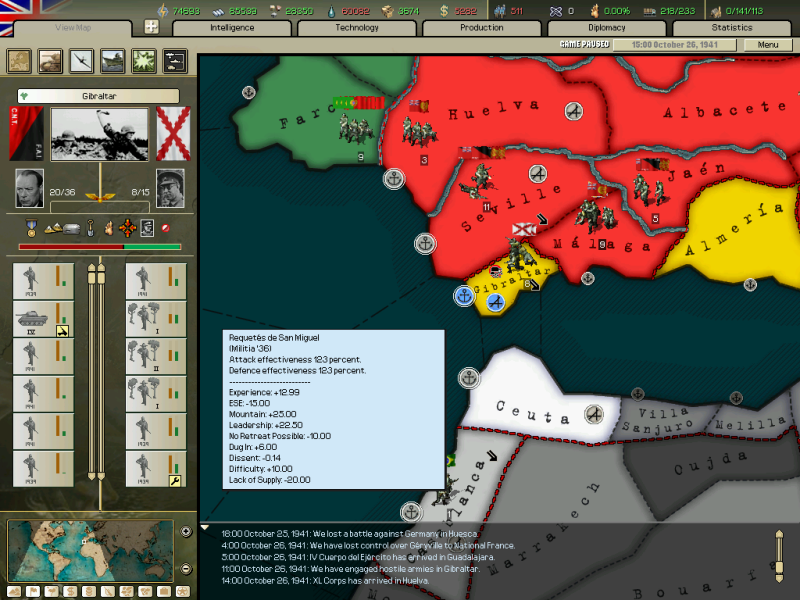
This first assault failed, but the British and Spanish divisions regrouped quickly, while the Carlists were already shaken and had little morale left. The second assault was only met by a half-hearted defence attempt, followed by the surrender of more than a hundred thousand Spaniards on the very first day of November.
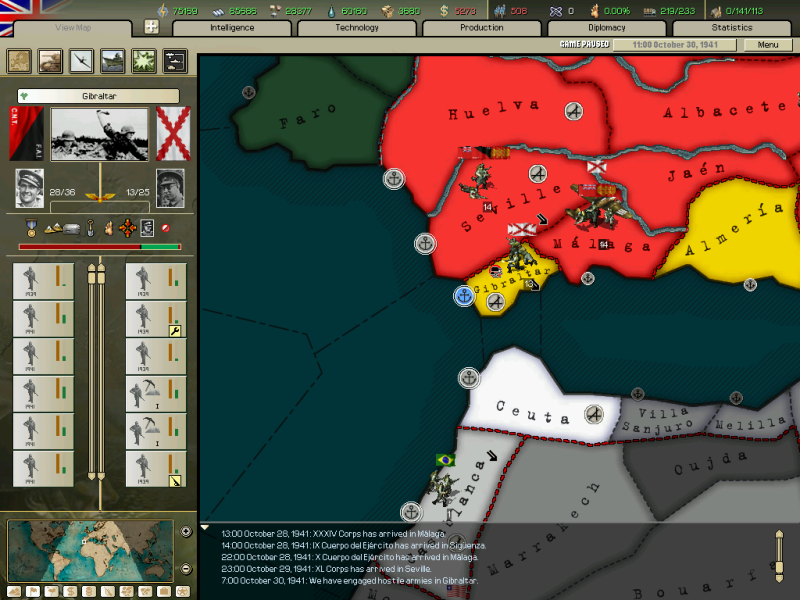
The Internationale turned its attention back to the Pyrenees front, where the high command decided not to try for an encirclement anymore; instead, Tarragona was attacked to evict the few Germans stationed there and reduce the pressure on Barcelona.
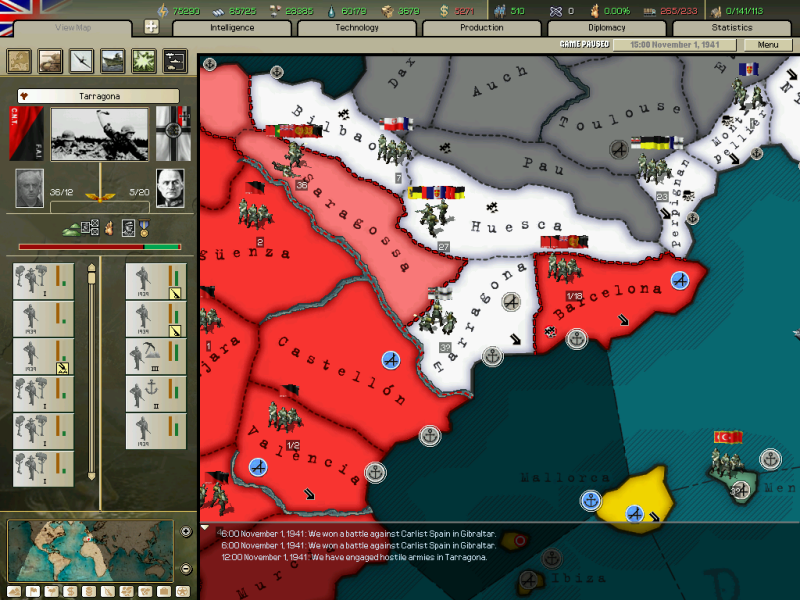
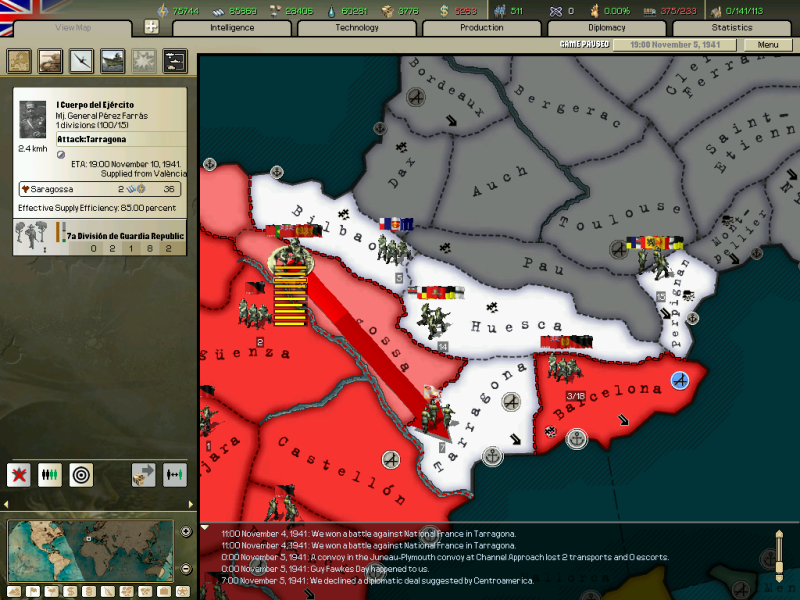
Meanwhile, most of the soldiers fighting in Southern Spain were redeployed to the Northern front. Only a few divisions, less than ten, stayed behind to protect the region against any landing attempts.
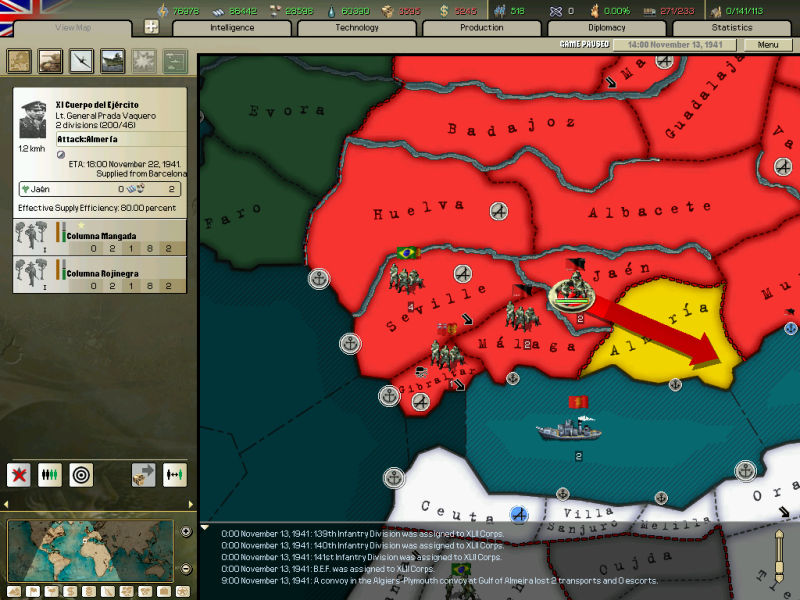
The North African situation was going downhill fast. 7 divisions were trapped in the desert and forced to surrender due to the speedy advance of the French and their Liberian allies, despite the fact that supplies were now flowing in.
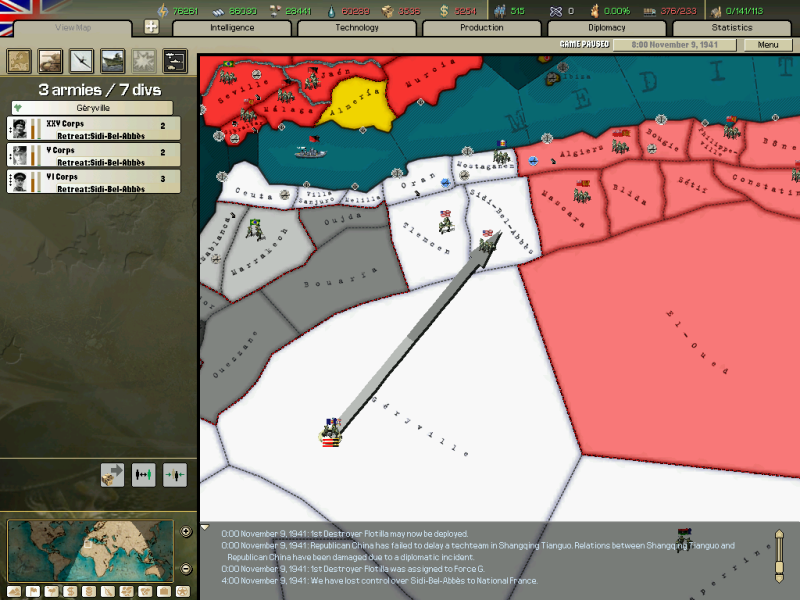
On the other hand, a Brasilian raiding party arrived to loot the colony of Morocco, making life harder for the Germans.
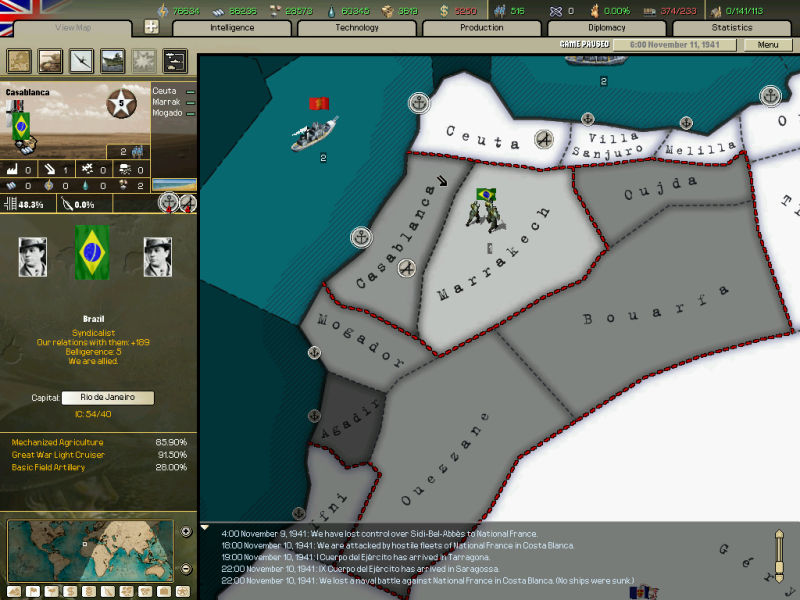
Eventually, as the troops in Algeria were back in supply, a few divisions were drawn back to Tunis to deal with the Ottoman invaders.
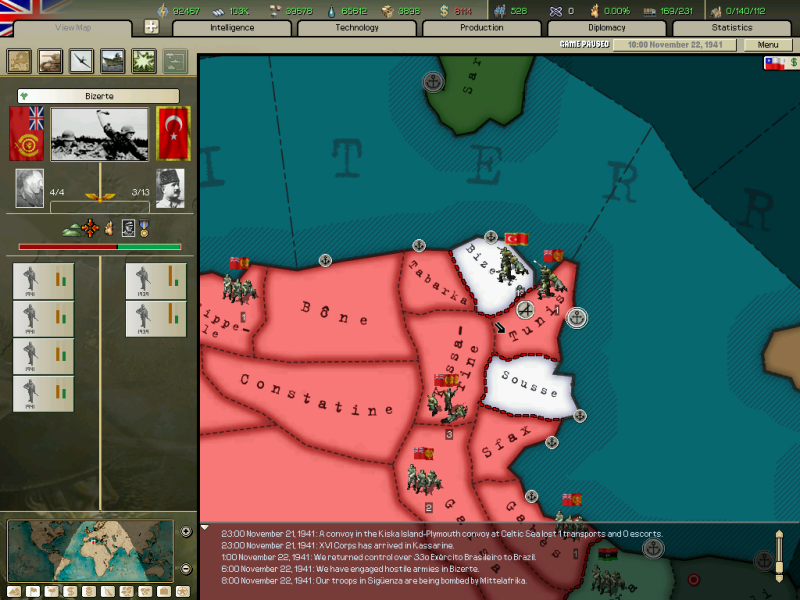
Although the forces arriving in Tarragona were insufficient to defend the province for long, British intelligence reported that Germany was drawing away a large number of divisions from the Pyrenees for some reason - perhaps for a decisive intervention in Ukraine. As far as the British were concerned, this was an excellent opportunity to push back the Germans, straight out of Spain proper.

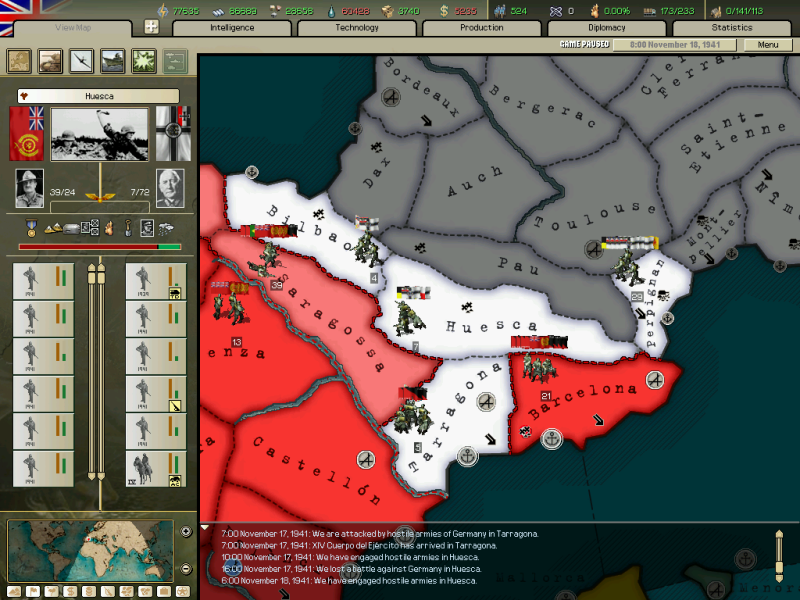
However, as the British army advanced it was clear that this advance was impossible at the time; the mountains of Huesca were frozen solid and the British would need to rest for a while before attempting to take them.
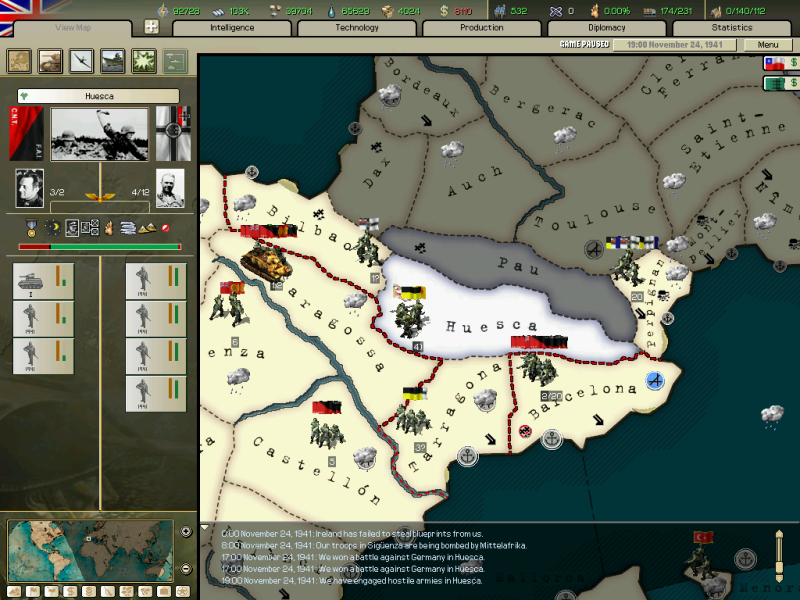
Therefore, it was decided that the Syndicalists would instead move out into Bilbao and Tarragona to create a stable front.

The final annexation of Carlist Spain (and thus the end of the liberation of CNT-FAI Spain) gave a minor headache to the Commissar of Foreign Affairs. Although Niclas y Glais arranged a meeting with Prince Xavier shortly after the fall of Gibraltar, in reality the pretender took one of the last remaining airplanes still under control of the Carlist airforce at that time, and escaped to Rome with it, along with his inner circle of supporters. Of course, the British didn't know this, all they noticed was that Francis Xavier de Borbón-Parma was nowhere to be found. In the end, one of the Carlists who stayed behind, namely Manuel Fal Condé, an important statesman of Carlist Spain was invited to Madrid to finalise the annexation. However, an angry mob of anarchists (of which there were more than a few at this time, with supporters of socialism being eager to root out counterrevolutionary elements even without state persecution against said elements) ambushed his motorcade and lynched him on the streets somewhere between Toledo and Madrid. In the end, Chairman Mosley simply declared that Carlist Spain was no more and there was "no further need to give more legitimacy to the monarchists by bothering to deal with them any more" - after all, this was still a civil war.
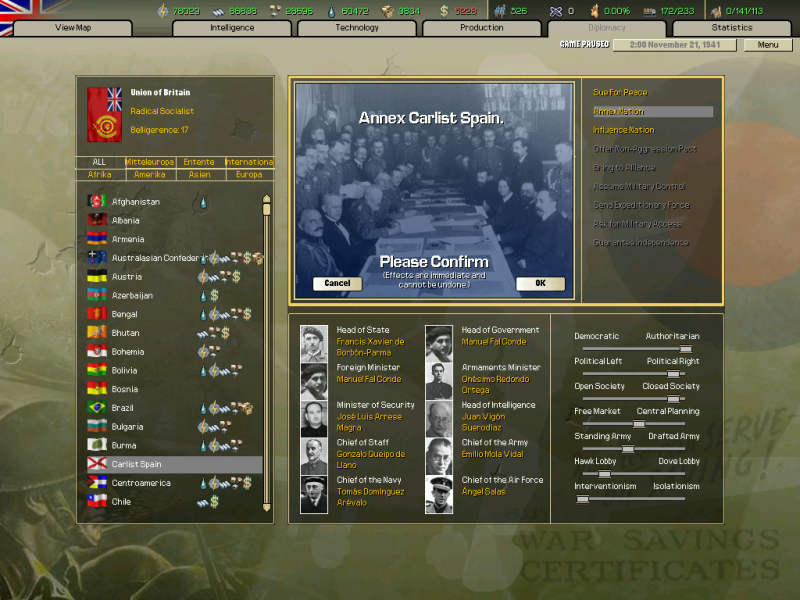
Regarding the Ukrainian situation, the Syndicalist ally in Eastern Europe was being systematically pushed back in the north, losing Moscow which they had held for a while and regrouping not far north of Kiev. To compensate, they took some lands in the East, threatening to cut off the Germans in the region.
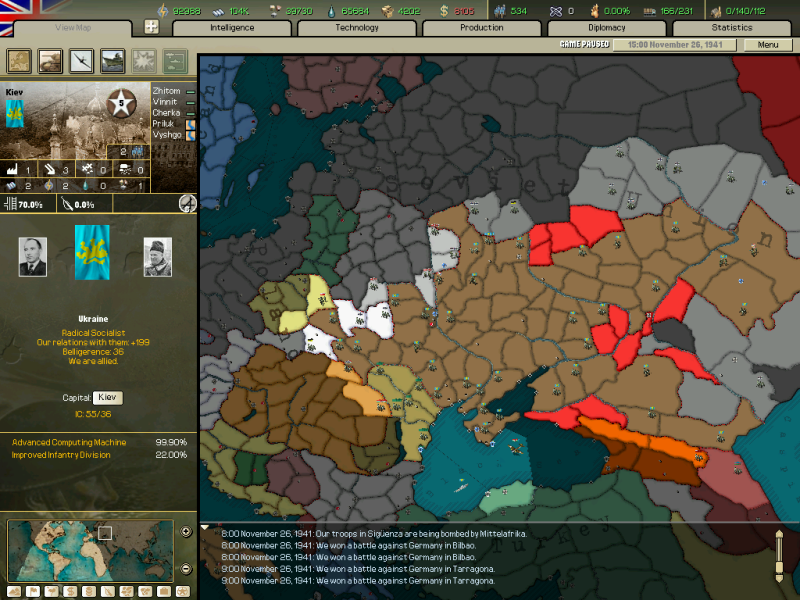
Morlak: The latest intelligence reports state that Germany has 199 (!) infantry divisions and 5 armored divisions, while National France has 37 infantry divisions. Then of course there are the Mitteleuropean client states and Austria who are also fighting against me. However, a part of this huge army is deployed on the Ukrainian front, while another part of it is probably garrisoning Russian territories.
---
As the African situation deteriorated with the landing of Ottoman troops near Tunis...

The situation in Southern Spain improved, as Syndicalist troops secured Seville and then attacked Málaga and Huelva to further fragment and destroy the Carlists.


Meanwhile, in the north, Mitteleuropa sought to advance deeper into Spain, attacking the weakly defended Castellón.

Obviously, the Syndicalist high command tried to isolate these troops, attacking at Huesca, but the Germans were prepared, and British and Spanish numerical superiority wasn't sufficient to oust the entrenched German and French divisions.

In the south, the Syndicalists were unstoppable. First, the isolated troops in Almería were crushed by the British divisions flooding into the region. After that, the Union of Britain and the CNT-FAI surrounded Gibraltar and prepared to launch a final assault against the Rock.


This first assault failed, but the British and Spanish divisions regrouped quickly, while the Carlists were already shaken and had little morale left. The second assault was only met by a half-hearted defence attempt, followed by the surrender of more than a hundred thousand Spaniards on the very first day of November.

The Internationale turned its attention back to the Pyrenees front, where the high command decided not to try for an encirclement anymore; instead, Tarragona was attacked to evict the few Germans stationed there and reduce the pressure on Barcelona.


Meanwhile, most of the soldiers fighting in Southern Spain were redeployed to the Northern front. Only a few divisions, less than ten, stayed behind to protect the region against any landing attempts.

The North African situation was going downhill fast. 7 divisions were trapped in the desert and forced to surrender due to the speedy advance of the French and their Liberian allies, despite the fact that supplies were now flowing in.

On the other hand, a Brasilian raiding party arrived to loot the colony of Morocco, making life harder for the Germans.

Eventually, as the troops in Algeria were back in supply, a few divisions were drawn back to Tunis to deal with the Ottoman invaders.

Although the forces arriving in Tarragona were insufficient to defend the province for long, British intelligence reported that Germany was drawing away a large number of divisions from the Pyrenees for some reason - perhaps for a decisive intervention in Ukraine. As far as the British were concerned, this was an excellent opportunity to push back the Germans, straight out of Spain proper.


However, as the British army advanced it was clear that this advance was impossible at the time; the mountains of Huesca were frozen solid and the British would need to rest for a while before attempting to take them.

Therefore, it was decided that the Syndicalists would instead move out into Bilbao and Tarragona to create a stable front.

The final annexation of Carlist Spain (and thus the end of the liberation of CNT-FAI Spain) gave a minor headache to the Commissar of Foreign Affairs. Although Niclas y Glais arranged a meeting with Prince Xavier shortly after the fall of Gibraltar, in reality the pretender took one of the last remaining airplanes still under control of the Carlist airforce at that time, and escaped to Rome with it, along with his inner circle of supporters. Of course, the British didn't know this, all they noticed was that Francis Xavier de Borbón-Parma was nowhere to be found. In the end, one of the Carlists who stayed behind, namely Manuel Fal Condé, an important statesman of Carlist Spain was invited to Madrid to finalise the annexation. However, an angry mob of anarchists (of which there were more than a few at this time, with supporters of socialism being eager to root out counterrevolutionary elements even without state persecution against said elements) ambushed his motorcade and lynched him on the streets somewhere between Toledo and Madrid. In the end, Chairman Mosley simply declared that Carlist Spain was no more and there was "no further need to give more legitimacy to the monarchists by bothering to deal with them any more" - after all, this was still a civil war.

Regarding the Ukrainian situation, the Syndicalist ally in Eastern Europe was being systematically pushed back in the north, losing Moscow which they had held for a while and regrouping not far north of Kiev. To compensate, they took some lands in the East, threatening to cut off the Germans in the region.




